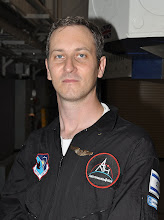A little physics calculation would reveal the balloon hurling through the beautiful Colorado sky a few days ago would hardly hold a six year old.
An observant eye would easily see that the balloon was not even completely filled, and definitely not flying the way it would if it had its center of mass at the little space under it.
I found several places on the internet which calculate the lift power of that balloon.

Here's a short page about air lifting and Helium from
"How Stuff Works" for the ones wishing to go through the math.
The cost of this little quest for flight, or more likely, quest to be on-air, was pretty high, from media coverage through the Colorado National Guard, Denver airport diverting flights, FAA tracking the balloon and I-25 crawling due to drivers looking up instead of forward (as revealed to me by a friend on Friday), to name a few.
It is interesting, that the UFO craze of the second half of the last century stepped aside in favor of publicity hunger, where the media (and us as its consumers) seek an amazing story, which if indeed little Falcon were in the balloon, would end either as an amazing adventure of kid survives after a breath taking chase of the balloon or the horrific end of an innocent child. While it was happening, no one would dare think that the story, which managed to push aside the economy, wars and other insignificant subjects away from the headlines, would finally end in a third way - like a popped balloon.
 It's the end of the year. 2009 marked the end of a decade, possibly an era. It was a year with the Augustine Report, a year with the first test of Ares, a part of the Constellation Program that may or may not take people to the moon or Mars (probably not), a year of several successful shuttle missions and maybe the most amazing discovery of finding water on the moon. Since space exploration progress is slow, and execution of decisions made today will take years if not decades, it is perhaps better to take the custom of New Year Resolutions and extend it to the next decade.
It's the end of the year. 2009 marked the end of a decade, possibly an era. It was a year with the Augustine Report, a year with the first test of Ares, a part of the Constellation Program that may or may not take people to the moon or Mars (probably not), a year of several successful shuttle missions and maybe the most amazing discovery of finding water on the moon. Since space exploration progress is slow, and execution of decisions made today will take years if not decades, it is perhaps better to take the custom of New Year Resolutions and extend it to the next decade.

















 Space Shuttle Launch Poll Results
Space Shuttle Launch Poll Results












